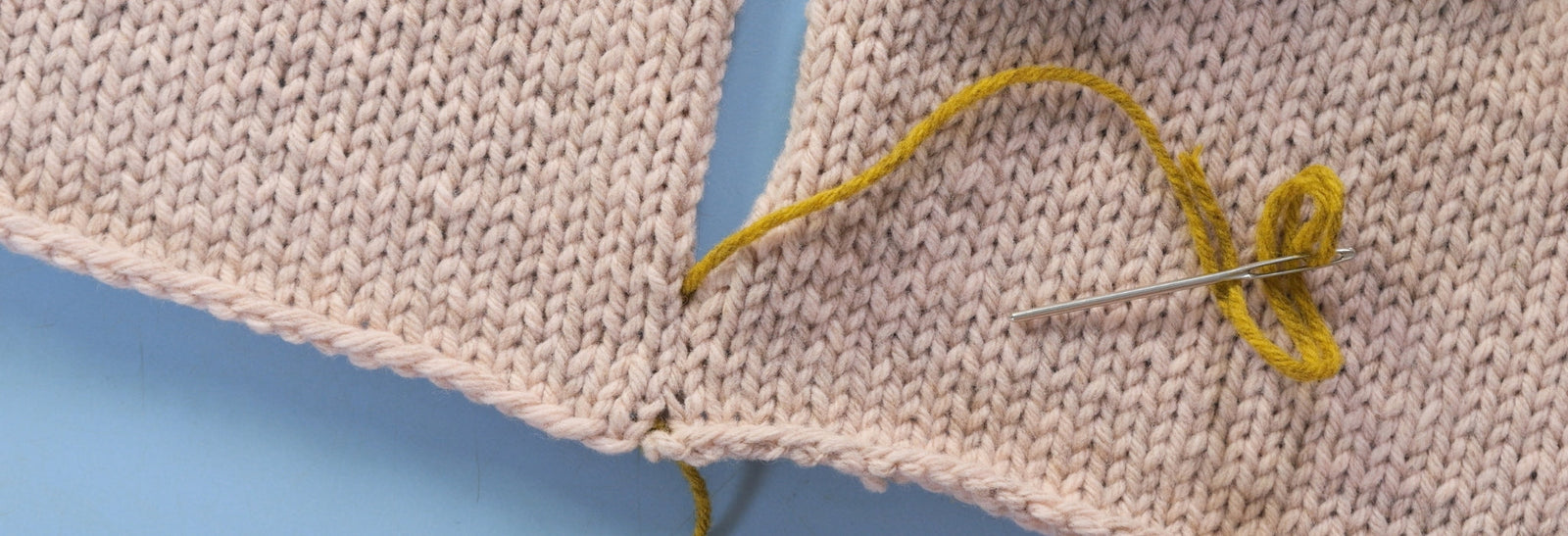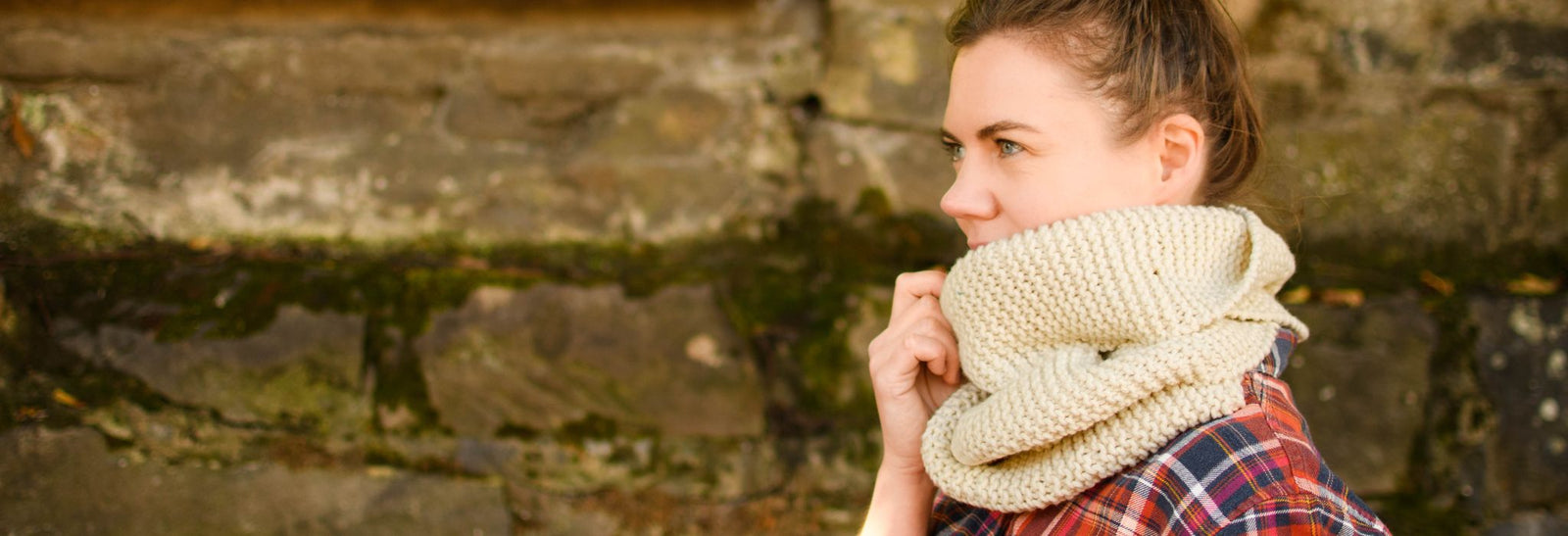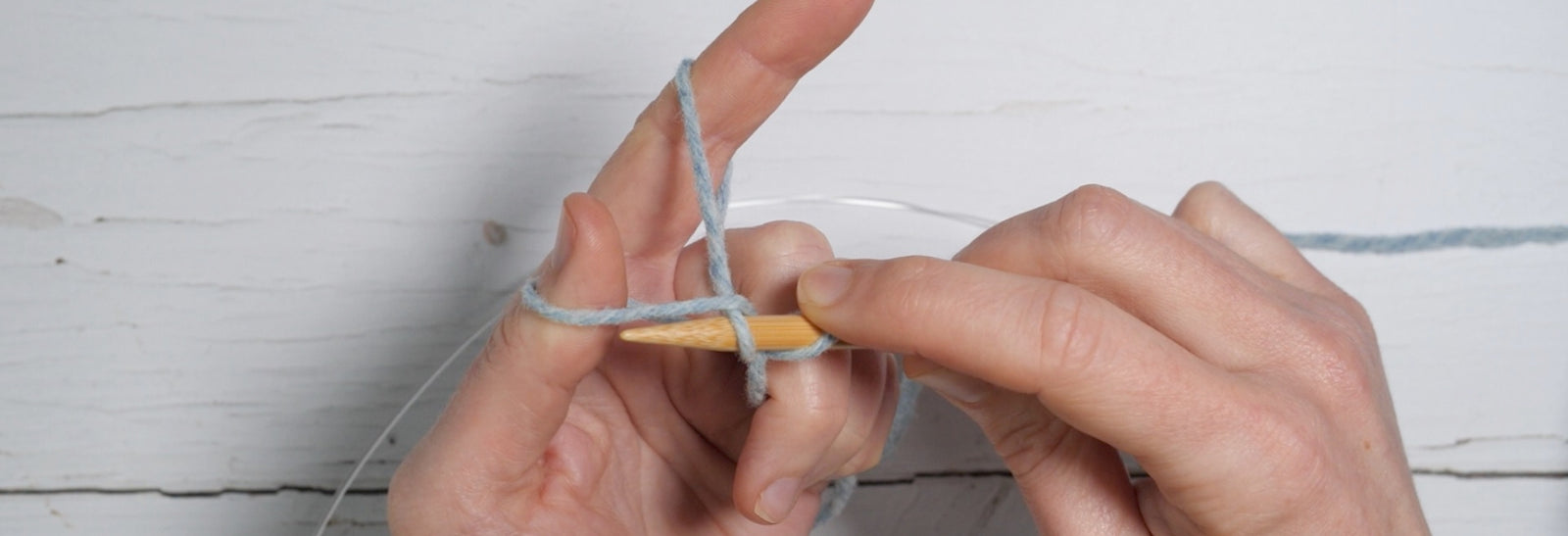Your Cart is Empty

Learn to knit: How to knit in the round using the magic loop technique
November 25, 2021
The Magic Loop is a technique, not a needle! Using one long circular needle, you can knit different circumferences of project using the Magic Loop technique. It’s a great alternative to double pointed needles for working small circumferences in the round, such as socks, mitts, hats, and sleeves. You can use magic loop for any project that doesn't have enough stitches to fit comfortably around a circular needle.

Compared with DPNs, there’s much lower risk of dropping stitches, and since it’s just one circular, you can’t misplace or lose a needle. Learning Magic Loop is also a good way to purchase fewer needles, since a long circular can be used for both magic loop and larger projects.
Needles for Magic Loop
A circular needle for Magic Loop should have a very flexible cable - it will be very frustrating to use one that twists on itself or refuses to bend. You can use any needle material, but when starting out with Magic Loop you may want to choose a less slippery material such as wood.

The length of the needle will depend on how large your project is. For socks and mitts a 32” (80cm) needle is likely long enough, but for sweater sleeves you may want a longer one such as 40” (100cm). These two lengths will cover most of your Magic Loop needs. Keep in mind that circular needle length is measured from needle tip to needle tip, not the length of the cable itself.
How to Magic Loop: Cast on and Set up

Cast on all the stitches onto your needle using your favourite method, or the one called for by your pattern.
Once you’ve cast on, push all the stitches down onto the cable.

Fold the cable in half, with the (approximate) centre of the stitches at the fold. Between the stitches, grab hold of the needle’s cable and pull it out, dividing the stitches into two sections.
Slide the two halves of the stitches up onto the needle tips. Depending on how large your project is, the stitches might be all on the needle, or some on the cable.

Before you join to work in the round, ensure that the cast on isn’t twisted - the bottom edge of the cast on should be continuous across all the stitches.
Join in the round

Hold the needles parallel and pointing to the right, with the working yarn coming off the back needle. Holding the stitches in place with your fingers, pull the back needle (the one with the working yarn attached) to the right, so that the stitches slide back onto the cable. This now-empty needle is your right needle.

Insert the right needle tip into the first stitch on the front needle, and knit it (or purl if that’s the pattern). Your work is now joined! Mark the beginning of the round between the needles with a locking stitch marker.
Knit in the round with Magic Loop

Now continue working across the first half of the stitches on this needle. When you reach the end of the stitches on this half, the right needle will have stitches on it and the left needle will be empty.


Flip the work so the second half of the round is facing you.

Slide the second-half stitches up to the empty needle tip, ready to be worked.

Pull the back needle (with the working yarn attached) to the right so the worked stitches are on the cable, and use this needle to work across the second half of the stitches.

You should always have two loops in the needle’s cable: one attached to your right working needle, and one halfway through the round.

Continue in this manner, working each half of the round by sliding the stitches up the working needle, pulling the back needle out to create a loop, then knitting across the front needle.
The Magic Loop technique is a useful and versatile skill to have in your circular knitting toolkit! What will you knit with the Magic Loop?
Also in Journal

Learn to Knit: Mattress Stitch
March 29, 2023
By following our step-by-step mattress stitch knitting tutorial, you'll learn how to make your seams look beautiful and how best to prepare your knitting so that when you seam it with mattress stitch, it goes smoothly on the first try.
Read More
How to Knit a Scarf: A Beginners Guide to Scarf Knitting
March 23, 2023
Want a quick and easy beginners tutorial on how to knit a scarf? This garter stitch scarf is easy to knit and requires just 3 skills; casting on, the knit stitch and casting off.
Read More
Learn to knit: the long tail cast-on
February 03, 2022
The long tail cast on is a great multi-purpose knitting cast on and the perfect place for beginner knitters to start. Learn how to work the long tail cast on and how to estimate the length of yarn needed with our clear step by step tutorial and video.
Read More Recent Articles
- Learn to Knit: Mattress Stitch March 29, 2023
- How to Knit a Scarf: A Beginners Guide to Scarf Knitting March 23, 2023
- Learn to knit: the long tail cast-on February 03, 2022
- How to Kitchener Stitch December 09, 2021
- Crochet Provisional Cast-on December 02, 2021
- Learn to knit: How to knit in the round with double pointed needles November 25, 2021
- Learn to knit: How to knit in the round using the magic loop technique November 25, 2021
- Learn to knit: How to knit in the round November 25, 2021
- Knitted Gift Ideas for you and your loved ones November 18, 2021
- Celebrating our Porty Hat Preview Knitters October 28, 2021
Free resources
-
KALS, step-by-step pattern guides and free patterns
Learn brioche with the free Daniel's Hat pattern
Tombreck - a free chevron beanie pattern
Working the brioche neck detail on the Polwarth sweater
Basics
Casting on
Decorative Channel Island Cast-on
Binding off
3 Easy Stretchy Bind-offs (p2tog bind-off; k2togtbl, k1 bind-off; Jeny's surprisingly stretchy bind-off)
Tubular Bind-off for brioche stitch
Increasing
Paired increase methods compared
Decreasing
Brioche stitch double decreases
Knitting in the round
How to Knit in the round using Magic Loop
How to Knit in the round using DPNs
Short rows
Swatching and gauge
Tips and tricks
Avoiding ears when binding off
Tighter purl stitches for neater cables and ribbing
Cabling without a cable needle
Reading knitting patterns
Understanding "continue in pattern"
Finishing
Garment knitting
Joining the body and sleeves on a seamless bottom up sweater
Sizing
Inclusive garment knitting
How to pick a garment without a model for you (specifically addresses finding garment patterns when your gender identity isn't represented and the styles you want to knit might not be sized to fit your body)
How does ease affect inclusive size ranges?
Specific stitch patterns
Lace
Identifying and fixing mistakes in lace knitting
Colourwork
Getting started with stranded colourwork
Understanding colour dominance
Working stranded colourwork over small circumferences
Decreases in stranded colourwork
Holding the yarn for stranded colourwork
Ladderback Jacquard (a neat way to deal with long floats)
Cables
Cabling without a cable needle
Cabling without a cable needle on the wrong side
How to knit cabled decreases
Closed ring cable increases and decreasesBrioche
How to work brioche stitch in the round
Other crafts
Cross stitch
How to begin your first large cross stitch project
How to finish a cross stitch project with an embroidery hoop frame
Mending

Sign up today
Find out the latest news from the studio such as sales, pattern releases, and new workshops or KALs our learning community, The Knitwork. We also share helpful tips and exclusive subscriber discounts...


